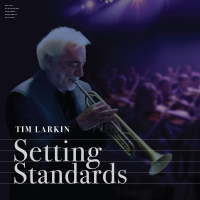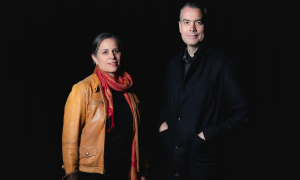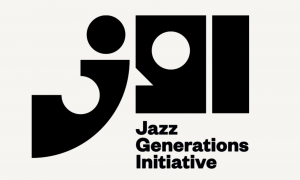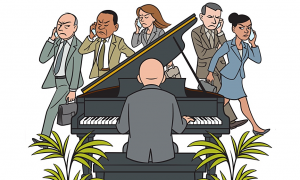A team of researchers studying the creative process now have a partial answer to that question. Using a group of trained jazz musicians who were also patient enough to agree to practice their art inside an functioning MRI machine, they've watched exactly what happens inside the brain when an artist begins to improvise.
Perhaps unsurprisingly, it turns out that large areas of the brain responsible for monitoring ones own behavior are all but shut down, while another small region associated with organizing “self-initiated" thoughts and behavior is highly active. As any musician will quickly guess, this wasn't an easy study to set up.
The subjects were told to lie on their backs in the MRI machine, with a keyboard on their laps, visible in a mirror above them. Given a variety of tasks to do, including playing a simple C major scale, improvising within that single scale, playing a tune from memory, and improvising along with a pre-recorded jazz quartet playing through headphones.
In both improvisational tasks, whether relatively simple or complex, large parts of the prefrontal cortex (and most specifically the dorsolateral prefrontal cortex) shut down almost completely. Researchers say this area of the brain is responsible for monitoring one's own performance, and can be associated with inhibitions.
By contrast, the medial prefrontal cortex, which researchers have seen is active when a person describes a past event, or when telling a story, was very active. They say this pattern is not usual, but is also associated with dream states.
Areas of the brain associated with sensory activity, including those linked with touch, hearing and vision, also were strongly active during the improvisational tasks, although there was little difference in what the subjects were actually seeing, feeling or hearing during those moments as compared to the rote tasks.
Researchers say that this brain pattern is likely replicated in other creative tasks as well, and that the pattern seen are likely to be indicators of hard-to-identify creative thought.
“One important thing we can conclude from this study is that there is no single creative area of the brain--no focal activation of a single area," said Allen Braun, chief of the language division of the National Institute on Deafness and Other Communication Disorders (NIDCD), in a study. The NIDCD funded the study. “Rather, when you move from either of the control tasks to improvisation, you see a strong and consistent pattern of activity throughout the brain that enables creativity."
The study was published in the PLoS ONE journal, and is available to read in its entirety online.
Neural Substrates of Spontaneous Musical Performance: An fMRI Study of Jazz Improvisation [PLoS ONE] In Jazz Improv, Large Portion of Brain's Prefrontal Region 'Takes Five' to Let Creativity Flow [National Institute on Deafness and Other Communication Disorders]
For more information contact All About Jazz.




























